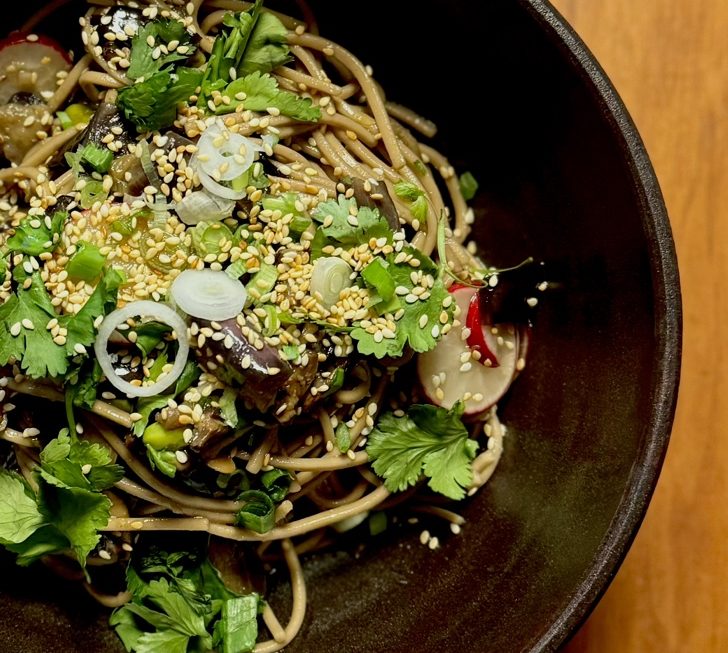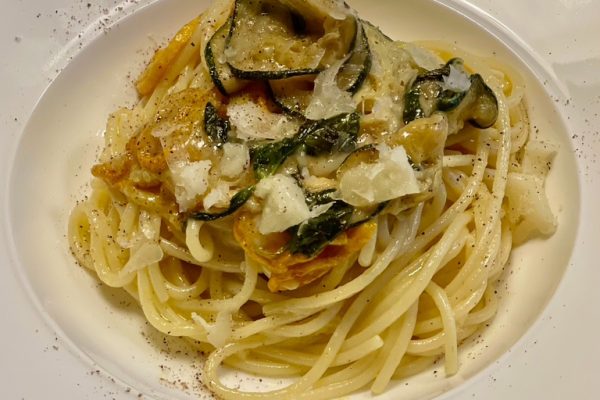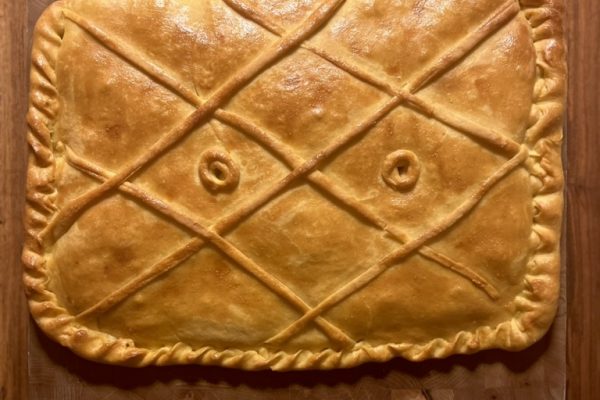Even if it’s still too cold and wet around here, summer has arrived. We are looking forward to hot days when we also love to eat lukewarm or even cool food. This noodle dish is wonderfully succulent, full of flavour and texture and a real umami bomb. It simply makes you happy all round.
With this recipe, we would like to inspire you to try cooking with the brownish, Japanese soba noodles made from buckwheat flour. They look unusual, but have a very special and ingeniously nutty flavour that has nothing to do with ordinary noodles.
The Japanese word soba literally means: buckwheat. This is somewhat misleading because buckwheat is not related to wheat, but surprisingly more to sorrel or rhubarb. Unlike wheat, buckwheat is gluten-free and contains a large amount of healthy nutrients such as iron, zinc and selenium. A true superfood.
In Japan, soba noodles are usually enjoyed in a very minimalist way, often only with “mentsuyu” or another sauce. The sauce we are presenting to you today is a variation of the classic mentsuyu without sake, but with a little sour ponzu sauce. As you can see, after rinsing dried shiitake mushrooms, we soaked them in some boiling water and left them to infuse for as long as possible. The resulting broth will later form the basis of our sauce.
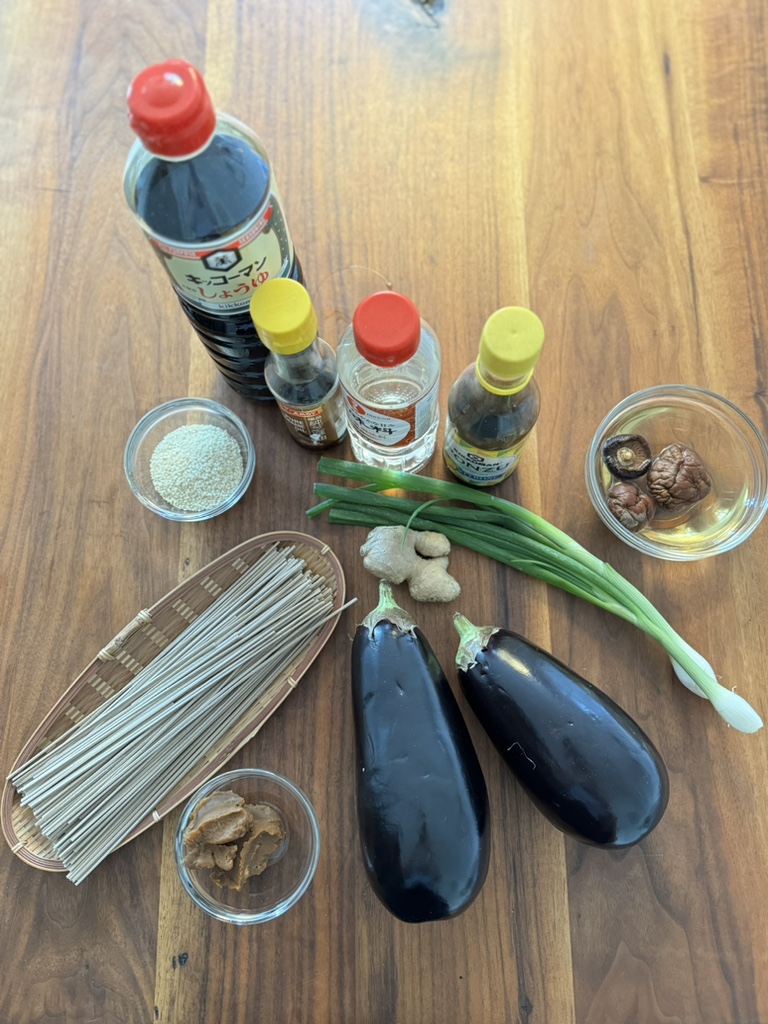
In addition to the basic ingredients for this dish, soba, aubergines, spring onions, ginger, sesame seeds, miso and seasoning sauces, you can add fresh ingredients to taste. We opted for mushrooms, edamame (soya beans) and crunchy radishes. We finished off with fresh coriander. None of this is compulsory, but left to your taste and availability.

First, let’s start with the aubergines. We wash them and then cut them into 3 – 4 cm cubes.
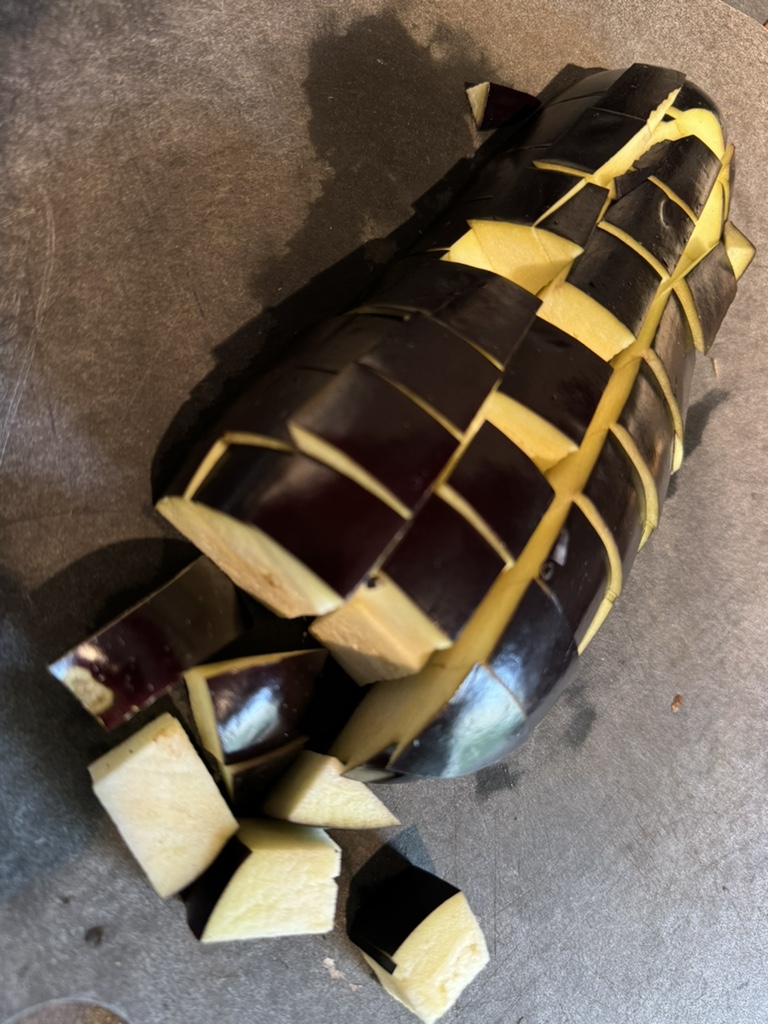
Then we mix the cubes in a sieve with a little salt and leave them to drain. This process takes about 20 minutes.
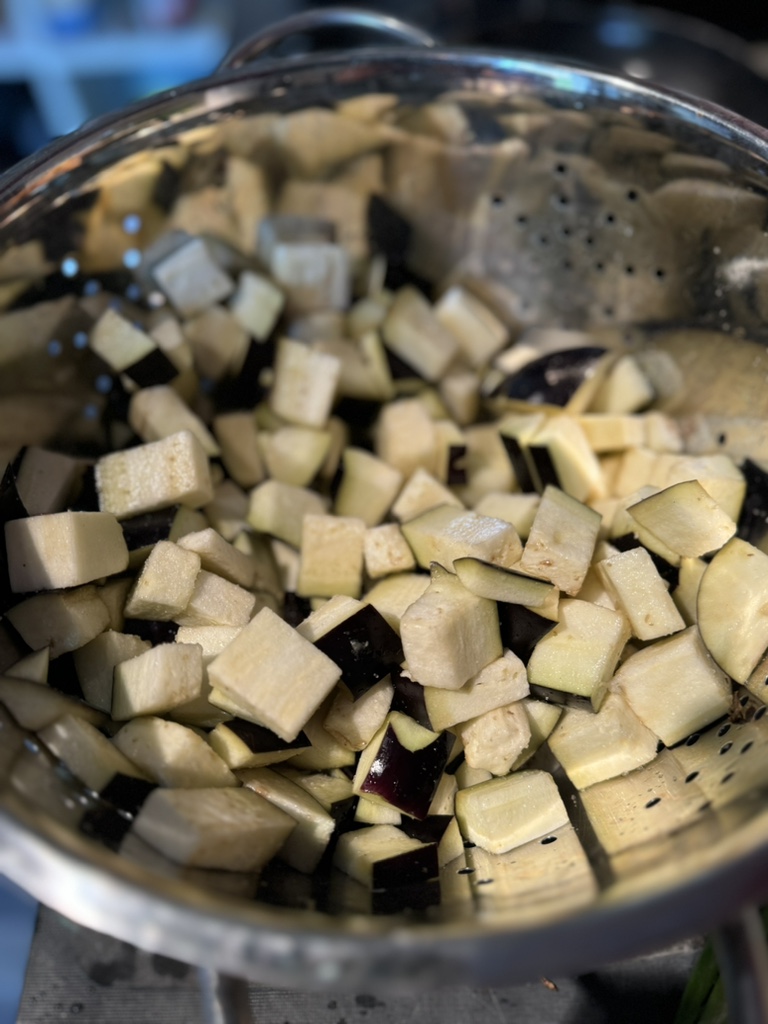
Meanwhile, we toast sesame seeds without fat in a pan over a medium heat. Be patient, this process takes longer than you might think. Keep stirring and wait until the sesame seeds are toasted golden brown and release their wonderful scent. Be careful not to let the sesame seeds burn.
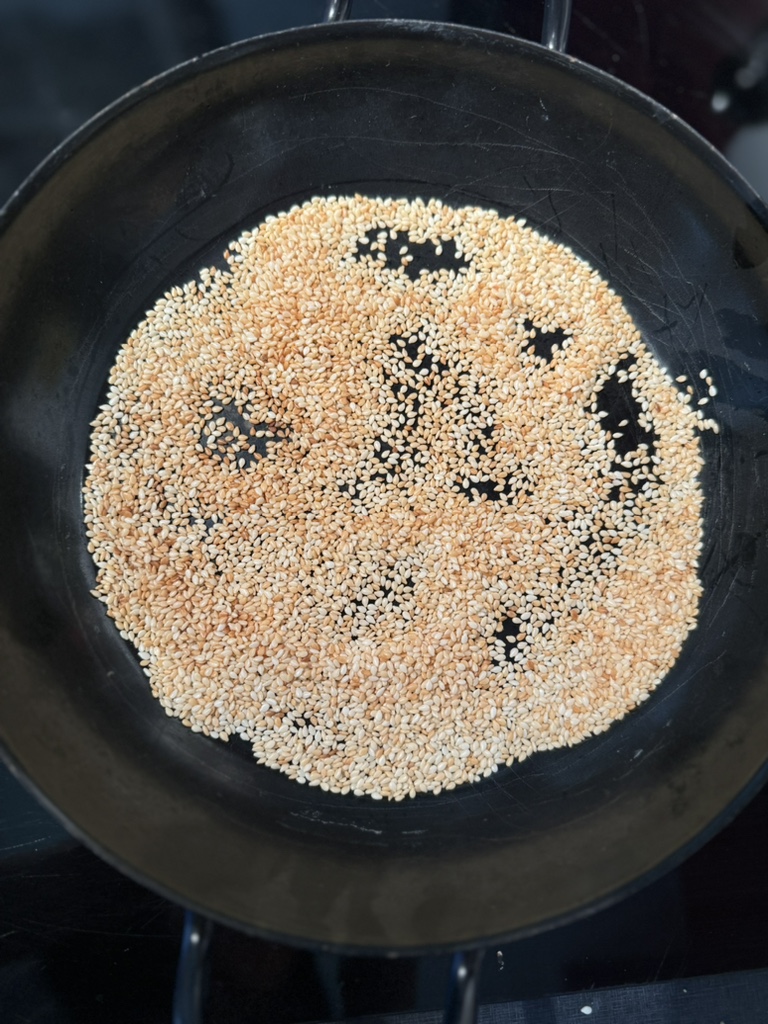
We slice the mushrooms not too thinly and fry them over a medium heat in a little sesame oil. Finally, we deglaze the mushrooms with a little soy.
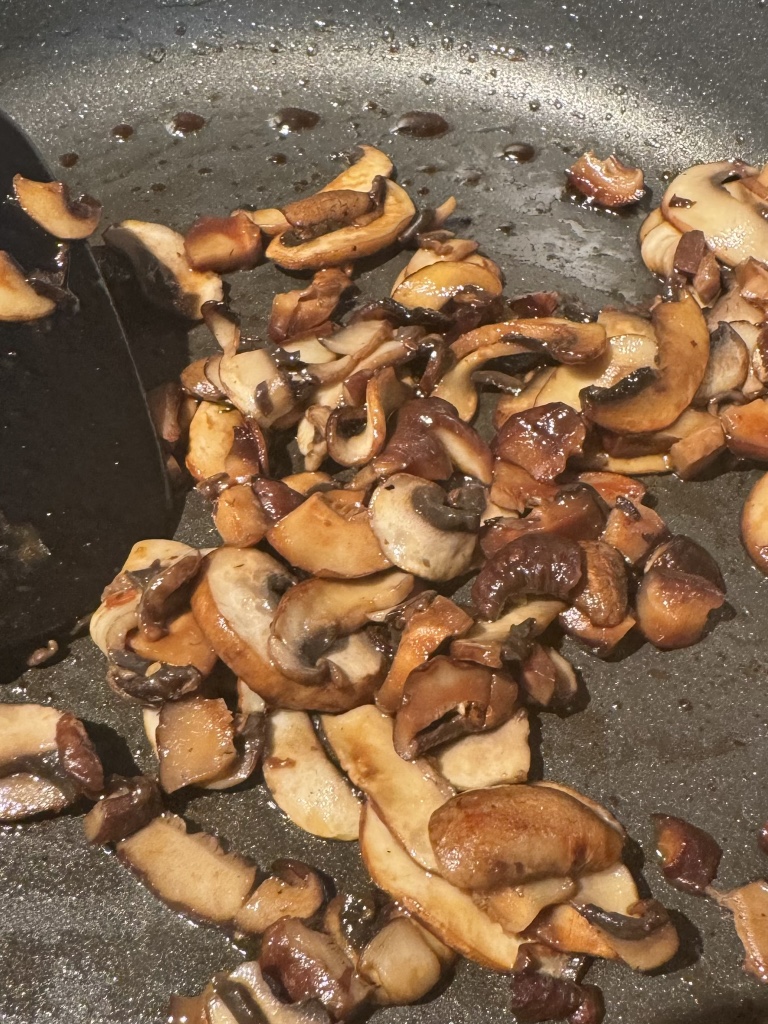
Edamame are boiled in salted water for 5 minutes if they are not pre-cooked, as in our case, and then only briefly mixed with the mushrooms.
Radishes and spring onions are also finely sliced and left in a little ice-cold water in the fridge until ready to use.
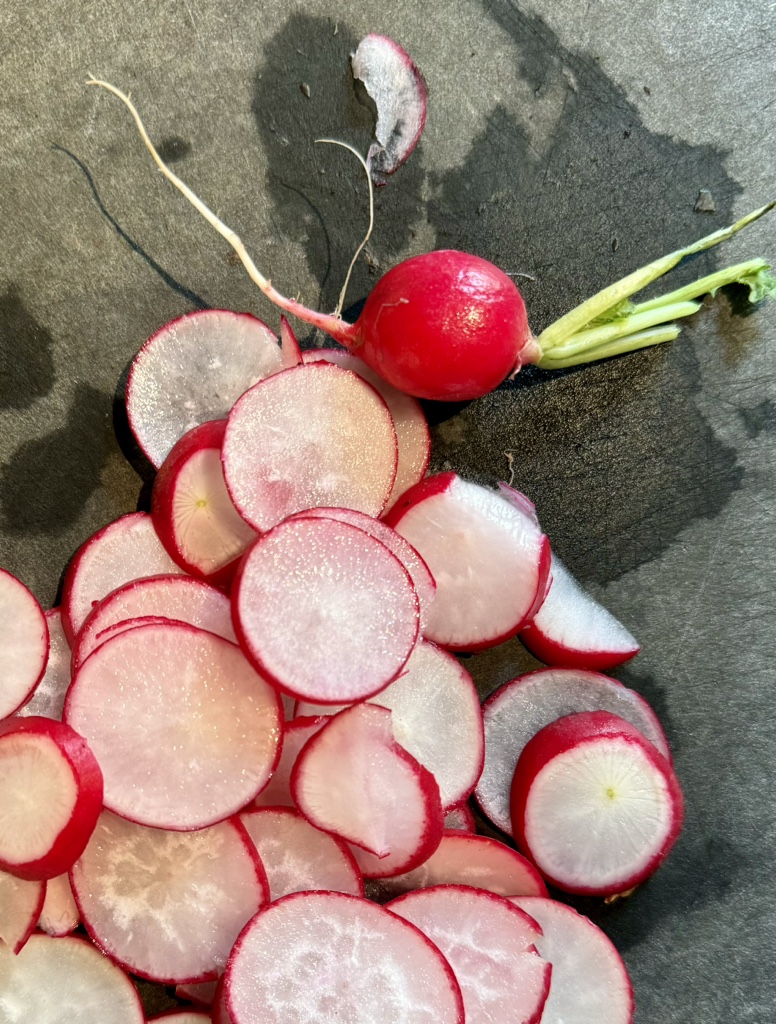
The best way to peel ginger is with a small, sharp-edged spoon. Then we chop it into the smallest possible pieces.
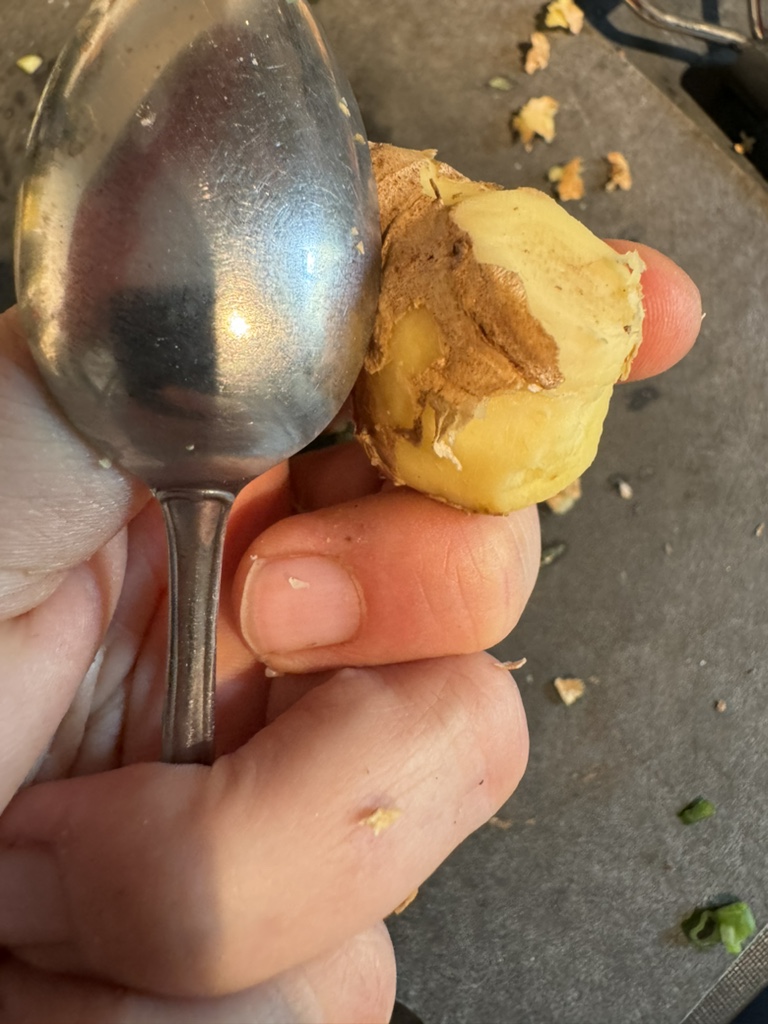
We place the aubergines in a pan with a little sesame oil and a teaspoon of chopped ginger over a medium-high heat and squeeze out more liquid with a wooden spoon. It doesn’t matter if the cubes lose their shape in the process, the flavour will only improve.
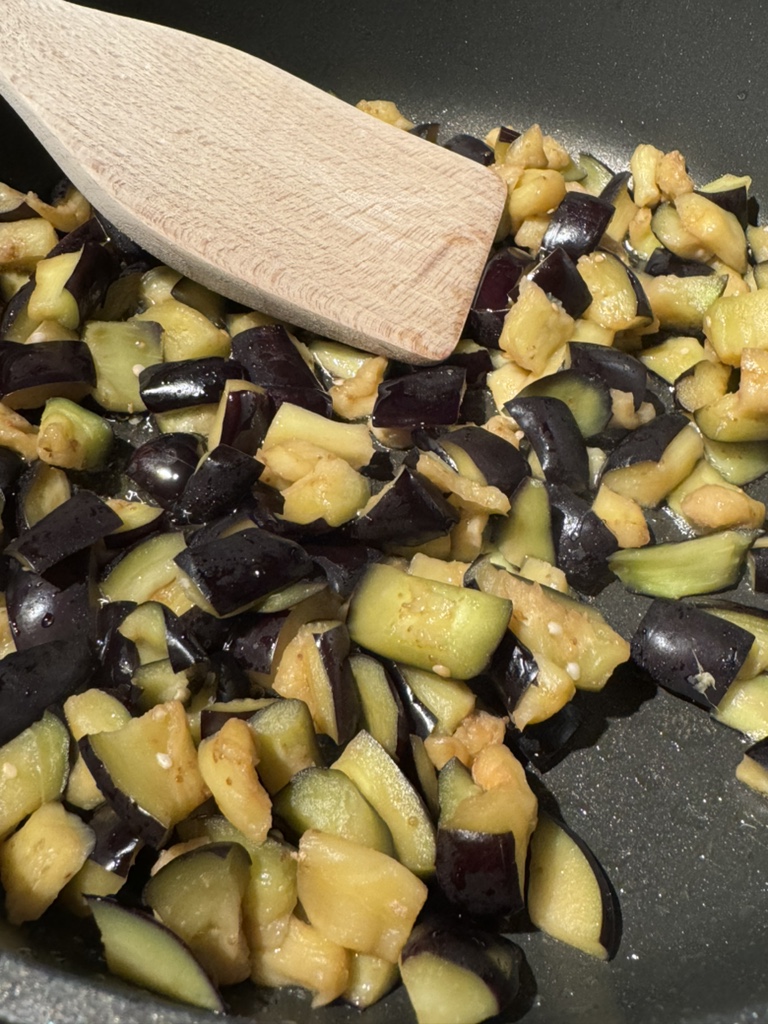
Then we also patiently fry the aubergine pieces until they are golden and fully cooked. Miso paste is dissolved in soy and a little water is added if necessary. Then this mixture is poured over the hot aubergines, which quickly absorb the seasoning. We can now set the aubergines aside and leave them to cool.
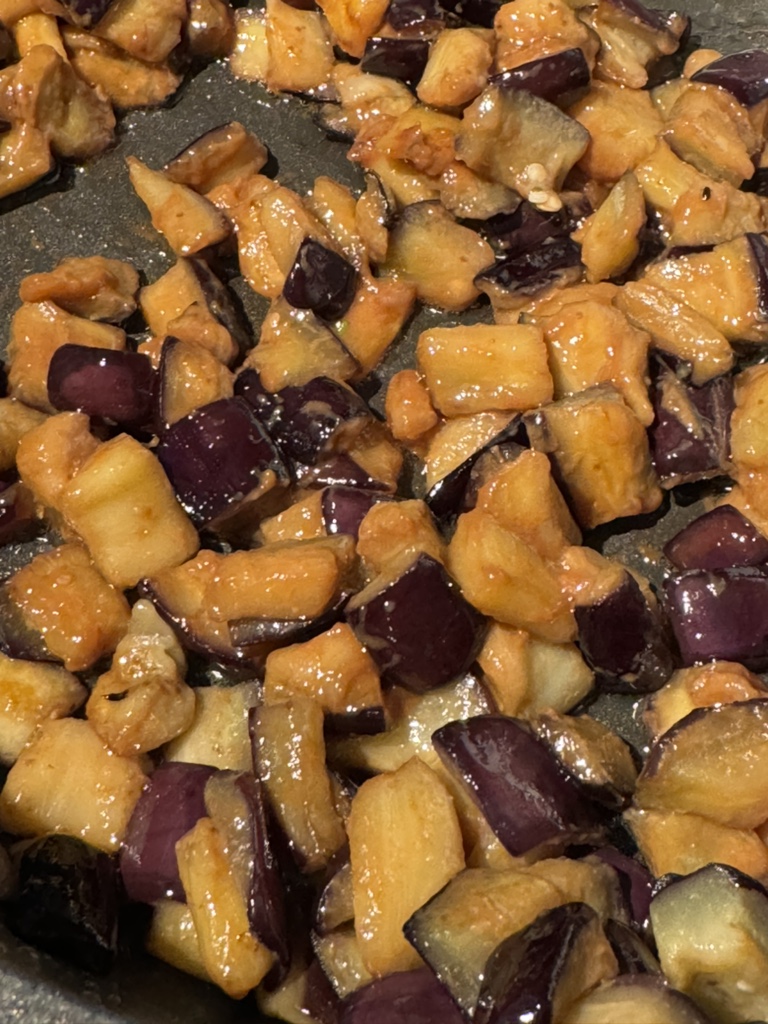
Now for the mentsuyu sauce. Today we use our “shiitake tea” as a base and squeeze out the mushrooms. We add dashi, the basic Japanese stock. Dashi can be made with fish ingredients, but there are also vegan versions. Our tip: If you love Japanese cuisine, it’s worth having dashi in the house for quick use. You can find it in liquid form in Japanese and Asian markets, but also in the form of (sometimes very good) instant products and prepared in sachets that look like tea bags. These broths have a distinctive flavour, delicate but with intense umami, we simply love them.
We then mix our basic broth with soy, mirin, ponzu and sesame oil in a small pan, add the remaining ginger and boil everything briefly for 2 minutes. Our mentsuyu is done!
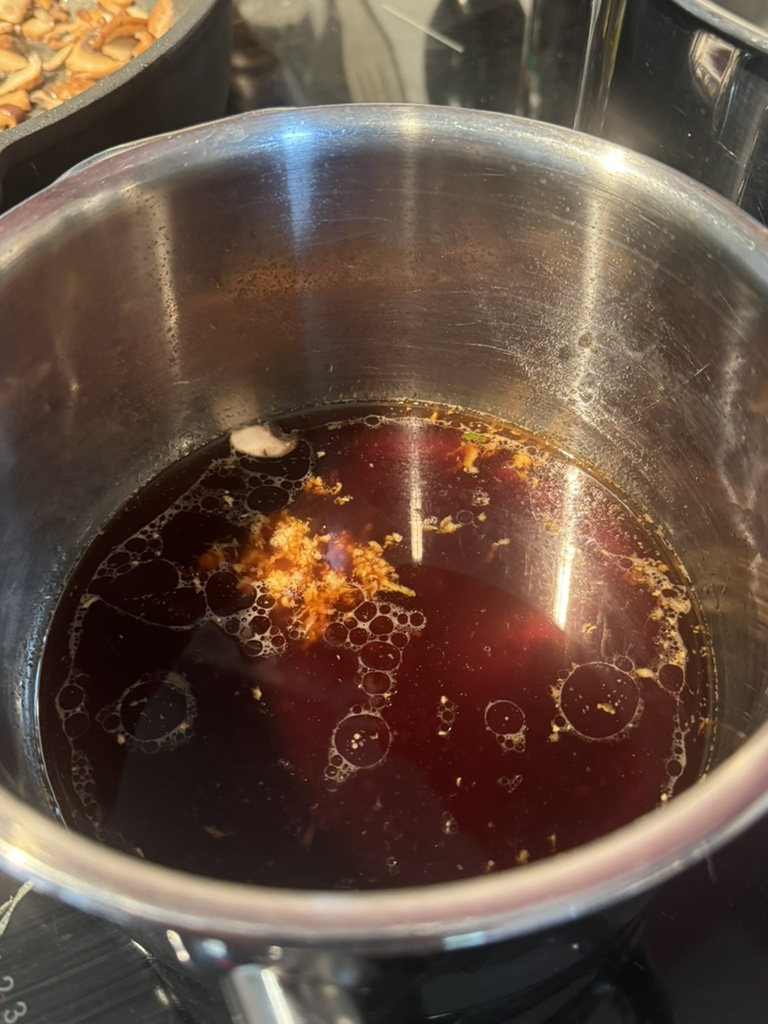
Now all that remains is to cook the soba noodles according to the packet instructions. Please be sure to follow the exact times given, as soba noodles can overcook very quickly and then no longer taste good. To prevent the noodles from overcooking, we therefore rinse them thoroughly with cold water immediately and place them briefly in a bowl of ice water before draining. Don’t be confused by the consistency: if the specified cooking time is adhered to, the noodles are usually still so firm that you might think you should cook them for longer. Don’t do this – they should remain firm to the bite.
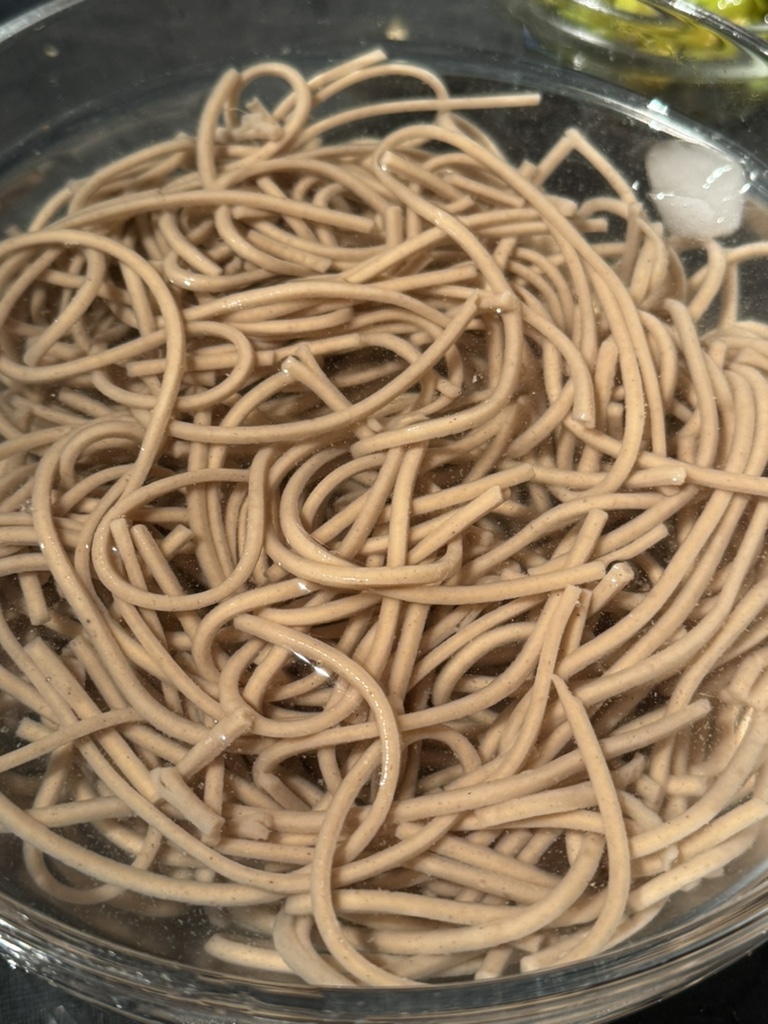
We now gently mix the prepared ingredients in each a large bowl: Noodles, miso aubergines, mushrooms and edamame, radishes and spring onions as well as mentsuyu. Coriander adds even more freshness and everything is sprinkled with toasted sesame seeds.
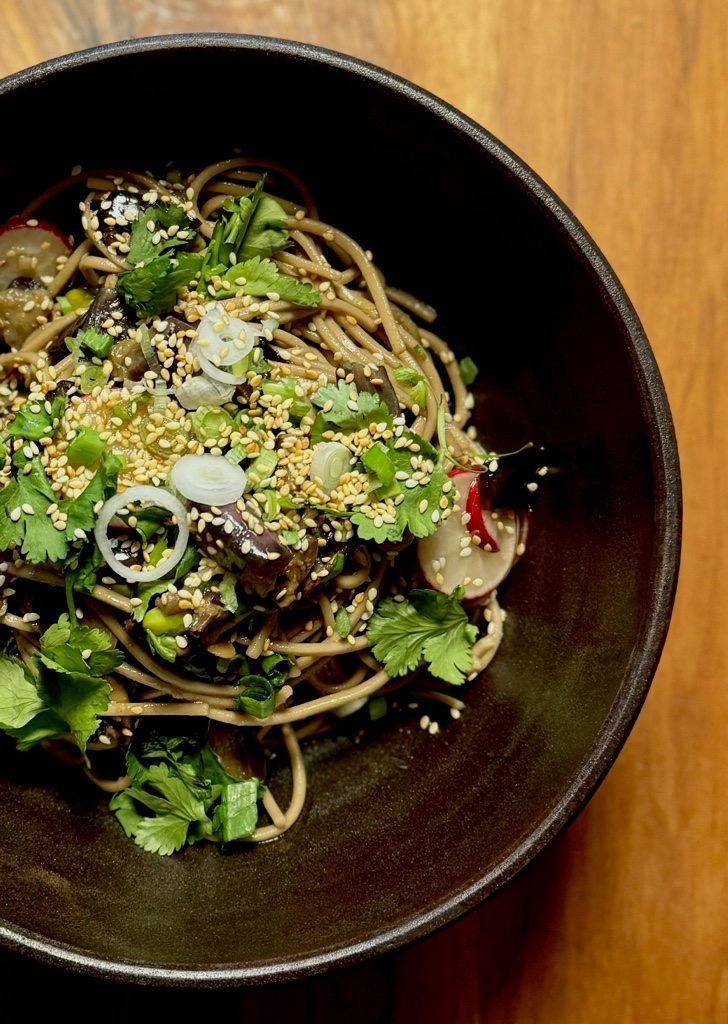
Enjoy.
And may the taste be with you.
Ingredients (for two people):
200 g soba noodles
2 small aubergines
3 spring onions
3 tbsp sesame seeds
2 tsp dark miso paste
4 tbsp light soy sauce
3 cm fresh ginger
A little sesame oil
For mentsuyu:
3 dried shiitake mushrooms, soaked in 100 ml hot water
150 ml dashi, with or without fish according to your preference
3 tbsp mirin
3 tbsp light soy
2 tbsp ponzu (or a little fresh lemon juice or a splash of rice vinegar)
2 tbsp sesame oil
Fresh ingredients of your choice, for example:
150 g button mushrooms or other mushrooms
1 handful of edamame (cooked)
4 radishes
Some fresh coriander
